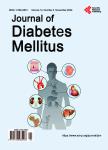Effect of the administration of Psidium guava leaves on blood glucose, lipid profiles and sensitivity of the vascular mesenteric bed to Phenylephrine in streptozotocin-induced diabetic rats
Effect of the administration of Psidium guava leaves on blood glucose, lipid profiles and sensitivity of the vascular mesenteric bed to Phenylephrine in streptozotocin-induced diabetic rats作者机构:Department of Physiology School of Medicine and Cardiovascular Research Center Hormozgan University of Medical Sciences Bandar Abbas Iran
出 版 物:《Journal of Diabetes Mellitus》 (糖尿病(英文))
年 卷 期:2012年第2卷第1期
页 面:138-145页
学科分类:1002[医学-临床医学] 100201[医学-内科学(含:心血管病、血液病、呼吸系病、消化系病、内分泌与代谢病、肾病、风湿病、传染病)] 10[医学]
主 题:Diabetes Lipid Profile Psidium Guava Blood Glucose Mesenteric Bed Ca/Mg Ratio
摘 要:The leaf of Psidium guava is traditionally used in Asia to manage, control and treat diabetes. We designed this study to elucidate the effect of the administration of oral doses of aqueous and ethanol extract from Psidium guava leaves on plasma glucose, lipid profiles and the sensitivity of the vascular mesenteric bed to Phenylephrine in diabetic and non diabetic rats. Animals were divided into 5 groups (n = 10): two groups served as non-diabetic controls (NDC), while the other groups had diabetes induced with a single injection of streptozotocin (STZ). Psidium guava-treated chronic diabetic (PSG-CD) and Psidium guava-treated controls (PSG-C) received 1g/l of Psidium guavaadded to the drinking water for 8 weeks. The mesenteric vascular beds were prepared using the McGregor method. Administration of Psidium guava caused Ca/Mg ratio, plasma glucose, high density lipoprotein (HDL), low density lipoprotein (LDL), very low density lipoprotein (VLDL), total cholesterol and triglyceride concentrations to return to normal levels, and was shown to decrease alteration in vascular reactivity to vasoconstrictor agents. Our results support the hypothesis that Psidium guava could play a role in the management of diabetes and the prevention of vascular complications in STZ-induced diabetic rats.



